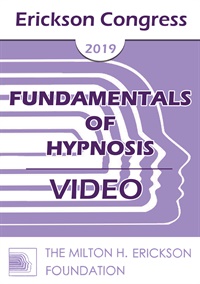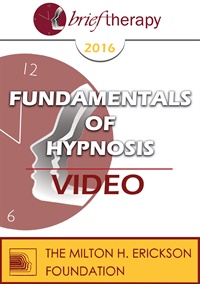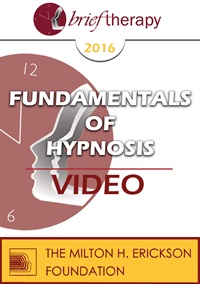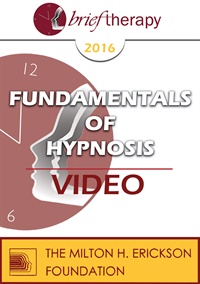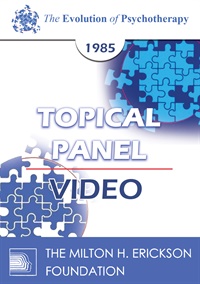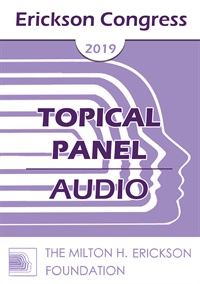
- Average Rating:
- Not yet rated
- Topic Areas:
- Topical Panels | Trauma | Post-Traumatic Stress Disorder (PTSD)
- Categories:
- Erickson Congress | Erickson Congress 2019
- Faculty:
- Ronald Alexander, PhD | Maggie Phillips, PhD | Robert Schwarz, PsyD
- Duration:
- 55 Minutes
- Format:
- Audio Only
- Original Program Date:
- Dec 14, 2019
- Short Description:
- This panel brings together three seasoned trauma clinicians to compare how Ericksonian methods, somatic therapies and energy psychology can work together in complex cases. Through lively discussion and case examples, they explore assessment, ego states, polyvagal-informed regulation, EFT, reenactment patterns, and ways to titrate activation without overwhelm. Participants also hear candid guidance on treating military veterans, supporting frontline workers, and protecting themselves from secondary traumatic stress, with practical tools for grounding, boundaries and post-traumatic growth.
- Price:
- $15.00 - Base Price
- Average Rating:
- Not yet rated
- Topic Areas:
- Fundamentals of Hypnosis | Indirection | Hypnosis | Language of Hypnosis | Yes Set
- Categories:
- Erickson Congress | Erickson Congress 2019
- Faculty:
- Stephen Lankton, MSW
- Course Levels:
- Master Degree or Higher in Health-Related Field
- Duration:
- 1 Hour 52 Minutes
- Format:
- Audio and Video
- Original Program Date:
- Dec 13, 2019
- Short Description:
- The rationale and basic research regarding the use of indirection will be presented. Participants will be guided through several exercises to help them learn and practice the construction of 4 fundamental forms of suggestions and 3 therapeutic binds. A demonstration using these forms will illustrate the implementation of these language techniques for both the induction and therapy.
- Price:
-
Sale is $29.00
price reduced from Base Price - $59.00
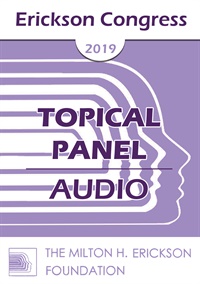
- Average Rating:
- Not yet rated
- Topic Areas:
- Workshops | Hypnotherapy | Indirection | Utilization | Ericksonian Hypnosis and Therapy Techniques
- Categories:
- Erickson Congress | Erickson Congress 2019
- Faculty:
- Gunther Schmidt, MD, MA
- Duration:
- 1 Hour 57 Minutes
- Format:
- Audio Only
- Original Program Date:
- Dec 12, 2019
- Short Description:
- Transparent hypnotherapy instead of indirectness- how clients as active co-hypnotherapist with all their senses can be invited to utilize symptoms as competent messengers of needs. In the Ericksonian tradition on the one side it is assumed that the knowledge and competences are already existent within the clients but on the other side many hypnotherapeutic interventions are structured as rather indirect and intransparent for the conscious mind of the clients.
- Price:
- $15.00 - Base Price
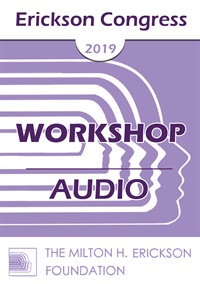
- Average Rating:
- Not yet rated
- Topic Areas:
- Workshops | Experiential Therapy | Mind-Body | Stress | Hypnosis
- Categories:
- Erickson Congress | Erickson Congress 2019
- Faculty:
- Helen Adrienne, LCSW, BCD
- Duration:
- 1 Hour 24 Minutes
- Format:
- Audio Only
- Original Program Date:
- Dec 12, 2019
- Short Description:
- This workshop introduces a series of mind-body tools for easing stress through indirection, curiosity and sensory awareness. Participants practice simple techniques like grounding, focused breathing, energy sensing, visualization and the use of metaphoric “protective space” to interrupt anxious patterns and return attention to the body. Through experiential exercises—including a guided inner-body journey and a paper labyrinth—the session shows how small shifts in focus can calm physiology, reduce reactivity and help clients feel more capable of self-soothing in daily life.
- Price:
- $15.00 - Base Price
- Average Rating:
- Not yet rated
- Topic Areas:
- Hypnosis | Fundamentals of Hypnosis | Hypnotic Induction | Hypnotic Phenomena | Indirection | Metaphors
- Categories:
- Brief Therapy Conference | Brief Therapy Conference 2016
- Faculty:
- Brent Geary, PhD
- Course Levels:
- Master Degree or Higher in Health-Related Field
- Duration:
- 1:22:28
- Format:
- Audio and Video
- Original Program Date:
- Dec 07, 2016
- Short Description:
- Coverage begins with essential topics and terminology in hypnosis. The process of a hypnotic session will be explained. (Participants will practice observing and elicitation of focused awareness in hypnotic subjects.) Various frameworks for hypnotic induction will be explained, demonstrated. The utilization of hypnosis always involves the hypnotic phenomena.
- Price:
-
Sale is $29.00
price reduced from Base Price - $59.00
- Average Rating:
- Not yet rated
- Topic Areas:
- Hypnosis | Fundamentals of Hypnosis | Hypnotic Induction | Hypnotic Phenomena | Indirection | Metaphors
- Categories:
- Brief Therapy Conference | Brief Therapy Conference 2016
- Faculty:
- Brent Geary, PhD
- Course Levels:
- Master Degree or Higher in Health-Related Field
- Duration:
- 1:46:32
- Format:
- Audio and Video
- Original Program Date:
- Dec 07, 2016
- Short Description:
- Coverage begins with essential topics and terminology in hypnosis. The process of a hypnotic session will be explained. (Participants will practice observing and elicitation of focused awareness in hypnotic subjects.) Various frameworks for hypnotic induction will be explained, demonstrated. The utilization of hypnosis always involves the hypnotic phenomena.
- Price:
-
Sale is $29.00
price reduced from Base Price - $59.00
- Average Rating:
- Not yet rated
- Topic Areas:
- Hypnosis | Fundamentals of Hypnosis | Hypnotic Induction | Hypnotic Phenomena | Indirection | Metaphors
- Categories:
- Brief Therapy Conference | Brief Therapy Conference 2016
- Faculty:
- Brent Geary, PhD
- Course Levels:
- Master Degree or Higher in Health-Related Field
- Duration:
- 2:32:02
- Format:
- Audio and Video
- Original Program Date:
- Dec 07, 2016
- Short Description:
- Coverage begins with essential topics and terminology in hypnosis. The process of a hypnotic session will be explained. (Participants will practice observing and elicitation of focused awareness in hypnotic subjects.) Various frameworks for hypnotic induction will be explained, demonstrated. The utilization of hypnosis always involves the hypnotic phenomena. A part of the workshop will explore the various phenomena and their role in clinical contexts.
- Price:
-
Sale is $29.00
price reduced from Base Price - $59.00

- Average Rating:
- Not yet rated
- Topic Areas:
- Children and Adolescent Therapy | StoryPlay | Trauma | Short Courses | Storytelling | Indirection | Experiential Therapy
- Categories:
- Brief Therapy Conference | Brief Therapy Conference 2012
- Faculty:
- Joyce Mills, PhD, LMFT
- Duration:
- 1:42:26
- Format:
- Audio Only
- Original Program Date:
- Dec 09, 2012
- Short Description:
- This experiential workshop will present an essential element of StoryPlay®, an Ericksonian, resiliency-based, indirective process of Play Therapy that focuses upon how to identify, access and utilize inner resources, skills, and gifts as invaluable “gems” to move us beyond diagnosis and effect transformational change for children and adolescents who have experienced trauma and adversity.
- Price:
- $15.00 - Base Price
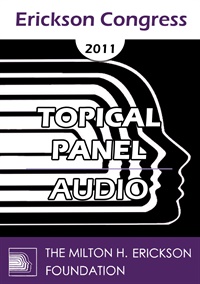
- Average Rating:
- Not yet rated
- Topic Areas:
- Hypnosis | Topical Panels | Mind-Body | Creativity in Therapy | Ericksonian Psychotherapy | Stress
- Categories:
- Erickson Congress | Erickson Congress 2011
- Faculty:
- Helen Adrienne, LCSW, BCD | Helen Erickson, PhD, MSN, AHN-BC, FAAN, SGAHN | Gary Ruelas, DO, PhD | Ernest Rossi, PhD
- Duration:
- 59 Minutes
- Format:
- Audio Only
- Original Program Date:
- Dec 07, 2011
- Short Description:
- This panel brings together clinicians and researchers to explore how mind, body and spirit interact through hypnosis, creativity and neurobiology. Speakers illustrate how imagery, stress reduction, and trance can calm the nervous system, support medical treatments, and restore a client’s sense of agency. They also discuss emerging research on gene expression, ultradian rhythms and the creative process, offering a hopeful vision of hypnosis as a bridge between biology, meaning and the human drive to heal.
- Price:
- $20.00 - Base Price
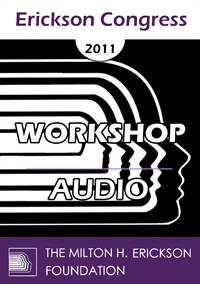
- Average Rating:
- Not yet rated
- Topic Areas:
- Workshops | Storytelling | Indirection | Hypnosis | Interspersal | Mindfulness
- Categories:
- Erickson Congress | Erickson Congress 2011
- Faculty:
- Sonja Benson, PhD | George Gafner, LCSW
- Duration:
- 59 Minutes
- Format:
- Audio Only
- Original Program Date:
- Dec 07, 2011
- Short Description:
- There are myriad indirect techniques and the addition of only one or two new ones to your toolbox can both motivate clients and alleviate the boredom of professional practice. The presenters have written extensively about the rich panoply of indirect techniques that can be used employed in both hypnosis and standard talk therapy. In this workshop, which will be both experiential and didactic, some of the topics include how to employ interspersal, pause, and subtle vocal shift as unconscious communications, metaphorical and short-burst ego-strengthening for clients debilitated by chronic medical and psychological disorders, story construction and story techniques, how to embed mindfulness principles in group anger management therapy, pattern interruption, and how to employ the clinician’s everyday emanation from the unconscious in creating hypnotic material for professional practice.
- Price:
- $20.00 - Base Price
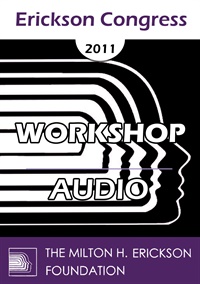
- Average Rating:
- Not yet rated
- Topic Areas:
- Post-Traumatic Stress Disorder (PTSD) | Workshops | Indirection | Trauma
- Categories:
- Erickson Congress | Erickson Congress 2011
- Faculty:
- Teresa Robles, MA, PhD
- Duration:
- 59 Minutes
- Format:
- Audio Only
- Original Program Date:
- Dec 07, 2011
- Short Description:
- We are living times of natural disasters, violence, wars. The number of people affected by PTSD is in-creasing. After a brief theoretical introduction, Dr. Robles will propose a model for working with persons suffering PTSD, in an indirect way, without provoking catharsis. After, she will demonstrate two techniques. Before the end, we will have time for reflections and discussing.
- Price:
- $20.00 - Base Price
Tags: Indirection PTSD Trauma
- Average Rating:
- Not yet rated
- Topic Areas:
- Fundamentals of Hypnosis | Hypnosis | Language of Hypnosis | Indirection
- Categories:
- Brief Therapy Conference | Brief Therapy Conference 2008
- Faculty:
- Stephen Lankton, MSW
- Course Levels:
- Master Degree or Higher in Health-Related Field
- Duration:
- 2:09:12
- Format:
- Audio and Video
- Original Program Date:
- Dec 12, 2008
- Short Description:
- The rationale for the use of indirection will be presented. In this session you will learn and practice the construction of fundamental forms of indirection language. Participants will practice five forms of indirect suggestions and three forms of binds. A demonstration using these forms will illustrate the implementation of this set of language techniques for the induction and treatment process. The use of indirect suggestions in further treatment will be outlined.
- Price:
- $29.00 - Base Price
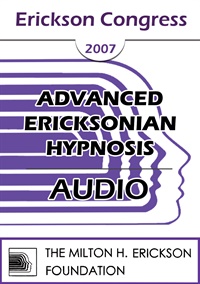
- Average Rating:
- Not yet rated
- Topic Areas:
- Workshops | Confusion Technique | Hypnosis | Indirection | Language of Hypnosis | Binds | Suggestion
- Categories:
- Erickson Congress | Erickson Congress 2007
- Faculty:
- Stephen Lankton, MSW
- Duration:
- 2:50:39
- Format:
- Audio Only
- Original Program Date:
- Dec 10, 2007
- Short Description:
- Participants will be guided through several exercises to help them learn and practice the construction of four forms of confusion technique, bring the number of indirect suggestion to six and the number of therapeutic binds to four. A demonstration using these forms will illustrate the implementations of this set of language techniques for the induction and treatment process.
- Price:
- $15.00 - Base Price
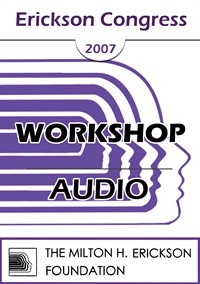
IC07 Workshop 26 - Indirect Suggestions & Therapeutic Binds in Hypnosis - Stephen Lankton, MSW, DAHB
- Average Rating:
- Not yet rated
- Topic Areas:
- Workshops | Ericksonian Hypnosis and Therapy Techniques | Hypnosis | Binds | Indirection | Language of Hypnosis | Suggestion
- Categories:
- Erickson Congress | Erickson Congress 2007
- Faculty:
- Stephen Lankton, MSW
- Duration:
- 1:53:33
- Format:
- Audio Only
- Original Program Date:
- Dec 07, 2007
- Short Description:
- This technique is among the most crucial to good therapy. Participants will be guided through several exercises to help them learn and practice the construction of six forms of indirect suggestions and four forms of binds. A demonstration using these forms will illustrate the implementation of this set of language techniques for the induction and treatment process. The use of indirect suggestions in further treatment will be outlined.
- Price:
- $15.00 - Base Price
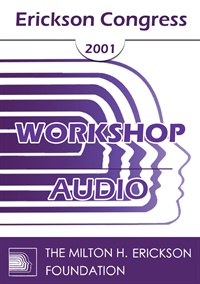
- Average Rating:
- Not yet rated
- Topic Areas:
- Workshops | Metaphors | Confusion Technique | Indirection | Binds | Suggestion
- Categories:
- Erickson Congress 2001 | Erickson Congress
- Faculty:
- Stephen Lankton, MSW
- Duration:
- 2:30:40
- Format:
- Audio Only
- Original Program Date:
- Dec 07, 2001
- Short Description:
- Participants will be guided through several exercises to help them learn and practice the construction of six forms of indirect suggestions, four therapeutic binds and four verbal confusion techniques. A demonstration using these forms will illustrate the implementation of this set of language techniques for the induction process and how they elaborate simple metaphor. Reasons for the use of indirect suggestions, binds and confusion in treatment and their effect will be addressed and demonstrated.
- Price:
- $15.00 - Base Price
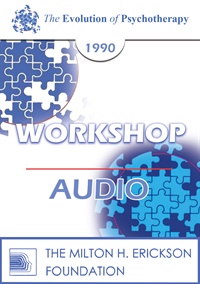
- Average Rating:
- Not yet rated
- Topic Areas:
- Workshops | Ericksonian Hypnosis and Therapy Techniques | Psychotherapy | Tailoring | Utilization | Indirection
- Categories:
- Evolution of Psychotherapy | Evolution of Psychotherapy 1990
- Faculty:
- Jeffrey Zeig, PhD
- Duration:
- 2 Hours 22 Minutes
- Format:
- Audio Only
- Original Program Date:
- Dec 16, 1990
- Short Description:
- Ericksonian approaches use both direct and indirect techniques and tailor methods to the unique characteristics of individual patients. Diagnostic categories can be used to individualize treatment. These tailored techniques are ways of "gift wrapping" ideas so that patients can best actuate effective changes. The concept of "Utilization'' and methods of processing interventions will be discussed. In Ericksonian treatment, dynamic experiences precede dynamic understanding.
- Price:
- $15.00 - Base Price
- Average Rating:
- Not yet rated
- Topic Areas:
- Topical Panels | Psychotherapy | Therapist Development | Training
- Categories:
- Evolution of Psychotherapy | Evolution of Psychotherapy 1985 | Pioneers in Couples and Family Therapy
- Faculty:
- James Bugental, PhD | Mary Goulding, MSW | Jay Haley, MA | Miriam Polster
- Course Levels:
- Master Degree or Higher in Health-Related Field
- Duration:
- 58:07
- Format:
- Audio and Video
- Original Program Date:
- Dec 13, 1985
- Short Description:
- The panel outlines key qualities and training methods for psychotherapists, emphasizing traits like empathy, creativity, and persistence. Training approaches include didactic learning, hands-on practice, video review, and live supervision. The discussion addresses the value of personal therapy, the challenges of academic settings, and the importance of adaptability in preparing therapists from diverse backgrounds.
- Price:
-
Sale is $29.00
price reduced from Base Price - $59.00


